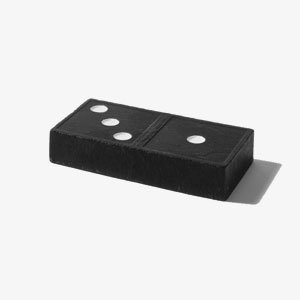I have always loved a good crossover – when the universes and stories of two or more brands mingle coherently and purposefully. My all-time favorite is still probably the X-Men and the New Teen Titans from the early 1980s. Two competing comic brands, Marvel and DC, were able to bring two of their strongest franchises together in a way that sold well and served their audiences.
Being audience-centric is what makes crossovers work, and the web is all about the audience. When done well, your internet presence should work as a giant retail funnel, helping your audience find your products and services. So crossing over and sharing audience with other brands is a vital way to build and strengthen your relationship with your audience.
The retailer understands that they get more value by touting each brand and helping them establish their presence in the minds of their larger, more general audience.
Interestingly enough, we find that sort of crossover working really well in traditional retail channels and their online extensions. Because smart retailers understand how to build their brands by leveraging the brands of their partners and vice versa.
1. Learning from the brandscaping of department stores
We’re all familiar with the layout of a department store. But if you think about some of the bigger chains like Macy’s and J.C. Penney (now jcpenney), they actually have branded sub-departments. When you go shopping for jeans, you shop brand by brand through Lucky Brand and Levi’s and 7 For All Mankind. This is a crossover or brandscape. Each brand has its own personality represented in varying degrees. I assume these degrees are related to their investment in their section.
There are different consumer audiences for these different brands, and the retailer understands that they get more value by touting each brand and helping them establish their presence in the minds of their larger, more general audience.
The crown jewel of this approach is the make-up and skincare department, where beautiful ladies represent the values of the brand they represent and try to sell you both on benefits and on lifestyle. The ability of these branded talents to tell the right story in an authentic way is what drives sales at the point of purchase.
2. Going super niche with Bianchi and Gucci
Gucci creative director Frida Giannini recently designed two bicycles in collaboration with Bianchi bicycles. They retail at Gucci’s London store for $14,000 and $5,000 dollars respectively. There is also a really cool helmet that retails for $890.
The buzz that this crossover has created would indicate that it is a success. Sometimes the crossover itself can drive the story. But there is more to this combo.
Both Gucci and Bianchi realized that leveraging the power of both their brands together is a powerful way to upsell an increasingly vital portion of urban living. Gucci’s audience has high expectations, and Bianchi is the right partner to deliver on them.
Is it the best, most amazing bike you can buy? No. Does it deliver on the brand expectations of Gucci’s audience, while adding to Bianchi’s quality and performance story? Absolutely.
3. J. Crew and Vintage Sneakers
Finally, J. Crew has teamed up with some top sneaker manufacturers to create and repurpose vintage designs for men that fit their audience profile perfectly. J. Crew wasn’t going to beat Nike, New Balance, or Vans at selling sneakers. So they partnered and created a new retail channel for these brands with a built in loyal audience.
The aesthetic fit between these shoes and the J. Crew brand is tight and seamless. J. Crew actually serves as a publisher in this arrangement as well, since their editorial understanding of their audience and their broadcast reach to their audience is so strong. And, of course, the partner brands build on that affinity while adding even more credibility to the J. Crew brand.
